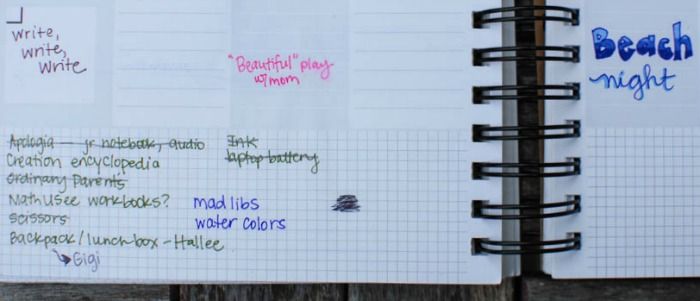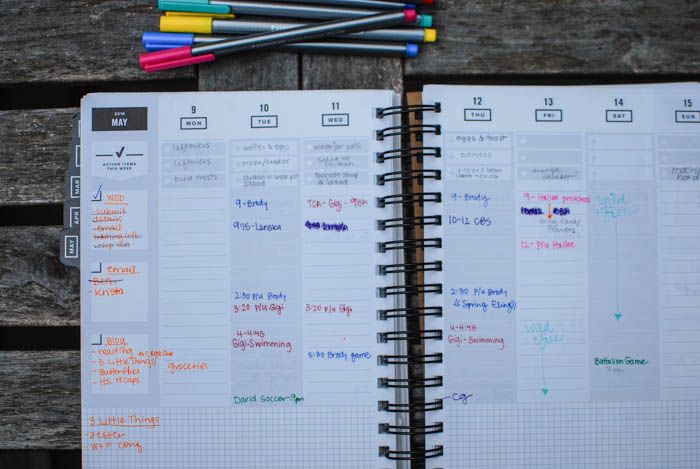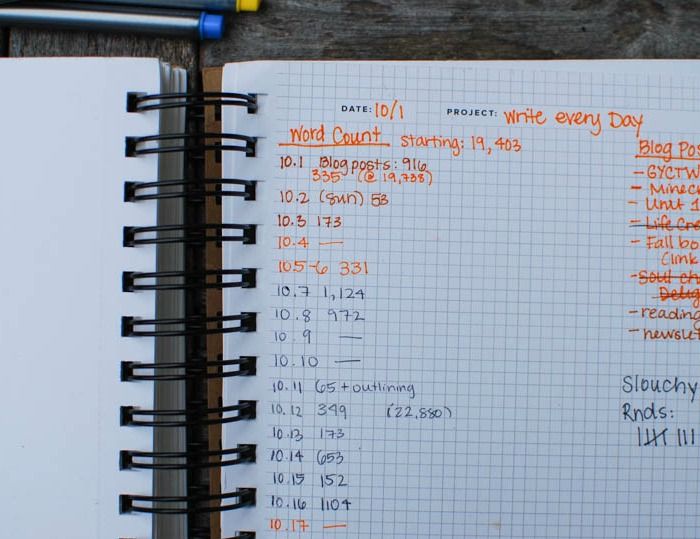Continuing our series during this final year of AoS of the top 12 published posts of all time (measured in simple traffic numbers), here’s number 11. Like last month’s, this one’s a surprise to me as well! It was first published in early 2017.
I love that it’s written by Nicole, one of our longest-running contributors (and former Simple Homemade editor, if you remember those days!). And seeing as I now do this hybrid form of journaling myself, it’s a good reminder of how we all evolve in what works best for us at any given time.
xoxo, Tsh
The Countdown: 12 / 11 / 10 / 9 / 8 / 7 / 6 / 5 / 4 / 3 / 2 / 1
I love seeing how people use their bullet journals (check out Tsh’s posts here & here; she also gives some background information on what exactly a bullet journal is if you’re new to this phenomenon).
I’m in a Facebook group for those who love to bullet journal (affectionately known to devotees as “BuJo”) and some of the photos people share of the journals amaze me. Some are flat-out works of art (but really practical, useful works-of-art!). Others are simple.
The common thread, of course, is that BuJo users can tailor their notebooks to their own needs.
As a visual person, checking my trusty paper planner is one of the first things I do in the morning. I’m no Luddite; my husband and I have a very well-synced Google Calendar that I reference daily, but my planner is where I get down to the nitty-gritty on paper.

It’s something tactile that I can see at a glance.
Years ago, before I knew the term existed, I was using a Moleskine journal to plan and keep track of my days, in a simplified BuJo style.
Over the last couple of years though, I realized that while I really love the idea of bullet journaling, I also really love planners, with their one-week spreads already sketched out, one-month calendars laid out with no work required.
I’m a creative person, but sometimes the blank page intimidates me.
My return to a love for paper planners began several years ago with a certain brightly colored cookie-cutter planner, but it didn’t quite fit my needs. I then tried another beautiful planner via Etsy that I was able to customize a bit, but it was still not quite right for me (apparently I was the Goldilocks of planners).
And then finally last year, I landed on my favorite planner yet. And why was this one such a fave? It’s minimal, useful, and leaves me lots of room to apply a bit of bullet journaling flair (and add my own color with fun pens) right in my planner.

Here’s how I combine bullet journaling practices using a simple planner. As a reference, I use the Get to Work Book, but there are plenty of journal options you could adapt.
Meal Planning
My planner has three shaded spots on each day that could be for the most important things on your to-do list. I personally use those for the day’s meals. I always write my meals in pencil, because life happens and I often have to shift days and meals.
Schedule
I like the days to have only open lines on my planner, no set times pre-printed. This way, I input appointments and times where they fit for me visually in the day.
To-Do List
Each week’s spread has three main items or goals, and I use those for bigger-ticket items, like a writing deadline or important errands. Smaller daily to-dos go in on each day.
Extra Notes & Blank Pages
My planner has plenty of space at the bottom of each page where I can brain dump or take random notes, and it also has blank pages at the end of the book, as well as at least one every month (plus some goal-planning templates).
Blank pages are a non-negotiable for me, and these are where I go to town with lists like books read (I use GoodReads but want to get better at tracking on paper, too), house projects, gift ideas, and big-picture planning.

The open space is a great place for habit-tracking, too, something I want to venture into more next year, along with some BuJo-inspired symbols and washi tape.
If you custom-order a planner online (via Etsy or elsewhere), sometimes you can order extra blank pages, which is a great way to make room for bullet journaling practices. The Nomatic planner is another planner that could work really well for combining planner use with bullet journaling, which has lots of lined and blank pages if you want to include the index of bullet journaling.
As with any productivity/planning system, the important thing is finding what works best for you. Don’t feel like you have to be pigeonholed into one system, either — pick and choose what works for you so that life can be as organized and productive as you want it to be.
p.s. In case you missed it, here’s Tsh’s episode on The Good List where she shares her journaling practices and recommendations.



